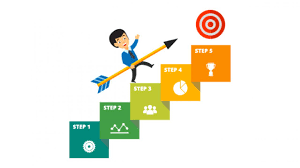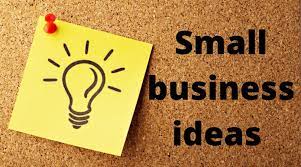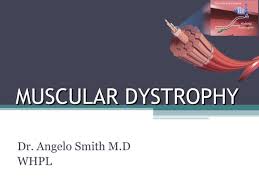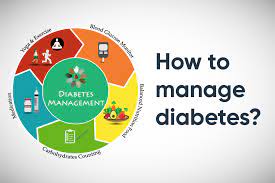Navigating the Digital Era: The Evolution of Everyday Living in the Age of IoT

Unleashing the Power of IoT: A Revolution in Connectivity, Convenience, and Healthcare
In this article, we delve into the exciting realm of the Internet of Things (IoT) and its profound impact on our daily lives. From smart homes and wearable gadgets to autonomous vehicles and industrial automation, connected devices have revolutionized the way we interact with technology. Prepare to embark on a journey that explores the endless possibilities and implications of this transformative technology. Discover how IoT is reshaping industries, enhancing convenience, and even revolutionizing healthcare. Stay tuned as we uncover the untapped potential of the IoT and reveal how it promises to shape the future in ways beyond our imagination. Get ready to witness a new era of connectivity and innovation!
The Internet of Things (IoT):

Definition and Overview The Internet of Things, often referred to as IoT, encompasses a vast network of interconnected physical devices that collect and exchange data through the internet. This revolutionary concept has transformed the way we live and interact with technology. Imagine a world where your alarm clock wakes you up at the optimal time based on your sleep patterns, your refrigerator orders groceries when supplies run low, and your car navigates the best route to avoid traffic – all seamlessly integrated through IoT. At its core, IoT is about connectivity and convenience. It allows everyday objects to become “smart” by embedding sensors, software, and network connectivity into them. These connected devices can communicate with each other and with us, making our lives more efficient, comfortable, and productive. From wearable fitness trackers that monitor our health to smart thermostats that learn our preferences and adjust the temperature accordingly, IoT has infiltrated every aspect of our existence. But beyond convenience lies a world of endless possibilities. The potential impact of IoT extends far beyond personal comfort; it holds immense potential for transforming industries such as healthcare, agriculture, transportation, and manufacturing. With IoT-enabled medical devices revolutionizing patient monitoring and treatment plans becoming more personalized than ever before; farms leveraging connected sensors to optimize irrigation patterns for maximum crop yield; cars communicating with traffic signals to reduce congestion – the scope for positive change seems boundless.
Benefits of the Internet of Things
The Internet of Things (IoT) has emerged as a transformative force that promises to revolutionize various aspects of our lives. The benefits of IoT are vast and wide-ranging, making it a truly remarkable technological advancement. One of the key advantages is the unprecedented level of convenience it brings to our daily routines. Imagine waking up to a smart home that anticipates your needs, adjusting the temperature, brewing your favorite coffee, and even ordering groceries when supplies are running low. With IoT, mundane tasks become automated, freeing up valuable time for more meaningful activities. Furthermore, IoT enhances efficiency and productivity in diverse sectors such as healthcare and agriculture. In healthcare, connected devices allow for remote patient monitoring and real-time data collection, enabling doctors to provide personalized care from afar. This not only improves patient outcomes but also reduces hospital readmissions and healthcare costs. Similarly, in agriculture, IoT sensors can monitor soil moisture levels, weather conditions, and crop health in real-time. By optimizing irrigation schedules and implementing precision farming techniques based on data insights from connected devices, farmers can increase yields while minimizing water usage and environmental impact. Moreover, the Internet of Things holds immense potential for improving safety and sustainability on a larger scale. Connected cars equipped with smart sensors enable safer driving by continuously monitoring road conditions and alerting drivers about potential hazards or traffic congestion ahead. Additionally, by analyzing traffic patterns collected from these vehicles’ data streams across cities or regions as a whole, transportation authorities can optimize traffic flow by implementing smarter traffic management systems.
IoT Applications in the Smart Home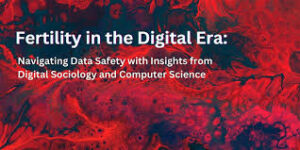
The rise of the Internet of Things (IoT) has sparked a revolution in our daily lives, particularly within our homes. Smart homes are no longer a futuristic concept, but a reality that is transforming the way we live. With connected devices and sensors seamlessly integrated into every corner of our houses, we can now control and monitor various aspects of our environment with ease. Imagine waking up to an alarm clock that not only gently wakes you up but also adjusts the bedroom temperature and opens your blinds to let in natural light. As you make your way to the kitchen, the coffee machine knows exactly when to start brewing your favorite blend based on your morning routine. And while you’re busy at work, smart cameras ensure your home is secure by sending real-time notifications and footage directly to your smartphone. But it doesn’t stop there – smart thermostats intelligently learn your heating and cooling preferences, optimizing energy usage for maximum efficiency and cost savings. Connected lighting systems adapt to your needs, creating personalized lighting scenarios for different activities or moods. Even mundane tasks like managing household chores are simplified with IoT-enabled appliances that can be controlled remotely or programmed to operate automatically. The possibilities within the smart home ecosystem are endless. From enhancing comfort and convenience to promoting energy conservation and improving safety, IoT applications have truly revolutionized how we interact with our living spaces. With continuous advancements in technology, we can look forward to even greater integration and seamless connectivity that will further enhance our everyday lives.
Enhancing Healthcare through IoT Devices
IoT devices are revolutionizing healthcare, ushering in a new era of patient care and monitoring. Connected wearables such as smartwatches and fitness bands enable individuals to track their vital signs in real-time, promoting proactive health management. Patients suffering from chronic diseases can now rely on smart implants that wirelessly transmit data to healthcare professionals, ensuring timely intervention and personalized treatment plans. Imagine a world where doctors remotely monitor patients’ conditions through IoT-enabled devices, minimizing hospital visits and maximizing convenience. Medical professionals can receive real-time updates on patients’ vital signs, allowing for early detection of potential health issues. This seamless integration of technology not only empowers individuals to take charge of their own well-being but also enables healthcare providers to deliver efficient and personalized care. Furthermore, IoT devices facilitate the adherence to medication regimes through automated reminders and intelligent pill dispensers. This innovative approach not only increases medication compliance but also reduces the risk of adverse drug events. With the help of IoT in healthcare, the gap between patients and medical professionals is bridged, enabling better communication, increased efficiency, and ultimately leading to improved medical outcomes for all.
Conclusion
In conclusion, the Internet of Things has undeniably revolutionized our lives, connecting various devices and enabling seamless communication between them. As we witness the rapid growth and expansion of this technology, our world becomes more interconnected than ever before. From smart homes to healthcare advancements, transportation innovations to agricultural transformations, and industrial process enhancements to addressing privacy concerns, the potential of IoT is immense. Embracing this technological shift with optimism and a forward-thinking mindset allows us to envision a future where every aspect of our lives is seamlessly integrated and optimized for convenience, efficiency, and sustainability. Let us embrace the possibilities that lie ahead as we forge a path towards a truly connected world.



